Microneedle-Based Vaccine Systems Emerge as Viable Future Option

Through considerations regarding cost, scalability, safety, and regulations, researchers provided an end-to-end perspective on microneedle-based vaccine strategies.
Microneedle (MN)–based vaccine systems are emerging as viable options for future vaccination efforts, according to data from a study published in Vaccine.1 Although study researchers noted significant limitations to implementing them, MN-based systems facilitated precise vaccine administration, heightened immune responses, and enhanced stability in vaccine formulation.
“While conventional vaccine administration approaches face numerous challenges, the development and application of MN technology could provide effective alternatives that enhance vaccine stability, safety, and accessibility,” wrote the authors of the study. “Vaccine delivery systems based on MNs, resulting from the fusion of MN and vaccine technologies, facilitate the direct administration of vaccines to the skin surface using micrometer-sized needles, serving as an innovative alternative to conventional injection techniques.”
When it comes to vaccination, researchers have been grappling with the best approaches for developing safe, effective, and noncostly immunization schedules to protect community health. Many of these recent developments are notable, surrounding discussions on the COVID-19 pandemic and the mass vaccination efforts used throughout that time period.
READ MORE:
According to McKinsey & Company, vaccine development seemingly stalled throughout 2019.2 Since then, public health in the US and elsewhere experienced unprecedented events during the pandemic, which resulted in hospitalizations, deaths, and most notably—in the context of this study—significant vaccine hesitancy. With the pandemic activating health care professionals and researchers to act on global vaccine uptake outside of COVID-19, vaccine hesitancy continued to increase.3
While a variety of reasons have emerged regarding patients’ reasons for expressing this hesitancy, pain and fear are 2 specific factors that have led to the development of MN-based vaccines.
“As an emerging vaccine delivery tool, microneedles overcome the problems associated with routine needle vaccination, which can effectively deliver vaccines rich in antigen-presenting cells to the epidermis and dermis painlessly, inducing a strong immune response,” wrote authors of a study published in Pharmaceutics.4 “In addition, microneedles have the advantages of avoiding cold chain storage and have the flexibility of self-operation, which can solve the logistics and delivery obstacles of vaccines, covering the vaccination of the special population more easily and conveniently.”
Despite the significant promise in MN-based vaccine development, adult and childhood immunization rates have continued to decline or show insignificant levels since the pandemic has waned.5,6 Amid these issues and the aforementioned vaccine development, researchers of the current study aimed to provide an end-to-end perspective on MN-based vaccine strategies.
“This review considers the rational design of MN systems and the development of MN strategies, including material selection and formulation with vaccines, as well as preclinical and clinical validation,” continued the authors of the study.1 “Moreover, this review aims to provide an integrated, end-to-end perspective on the development of MN strategies through a consideration of cost, scalability, safety, and regulatory considerations.”
In their extensive breakdown of MN vaccine technology, researchers started by exploring the 5 main groups of MN-based vaccine delivery: coated, dissolving, hollow, solid, and hydrogel-forming MNs. While significant research is needed on MN technology in general, let alone the respective MN groups, these 5 options provide ample alternatives for vaccine administration as MN technology is further developed.
The researchers then delved into how health care leaders will be expected to apply safe, effective, and accessible MN vaccine technology.
“The primary objective of MNs is to enhance patient comfort and ensure safety by offering a less painful option than conventional needle and syringe injections,” they wrote.1 “MNs penetrate the skin by creating micrometer-sized openings in the outer skin layer to enable drug delivery with minimal pain and irritation, avoiding interaction with nerve endings.”
According to the researchers’ review, the application of MN-based vaccine technology provides a myriad of potential advantages. If implemented into health care properly, MN vaccines can assist in self-administration capabilities, increasing immunization access, reducing pain from vaccines, enhancing vaccine acceptance, and decreasing needle-related injuries or infections.
However, with these new opportunities and advantages, there are certainly challenges to MN-based implementation in vaccine administration.
“The fusion of vaccination technology with MN technology is associated with several technological hurdles,” noted the authors.1 “These include issues with structural integrity, material selection, the challenge of ensuring precise dosage, design complexity for a range of uses, obstacles in terms of small-scale production, obstacles in terms of cost management, concerns about sterilization, and concerns about safety.”
While there are certainly concerns regarding MN vaccines’ costs, scalability, safety, and regulations, the use of this technology for boosting immunization rates and decreasing vaccine hesitancy is still in its beginning stages. With so much promise in bolstering public health behind these new approaches, researchers are dedicated to overcoming existing challenges and implementing the technology where it may be useful.
“The integration of MN technology with vaccine development offers a promising avenue for refining vaccine delivery and broadening immunization efforts,” they concluded.1 “By overcoming existing hurdles and leveraging the capabilities of MN-based systems, a more effective and accessible vaccination strategy can be developed, which contributes to global health initiatives.”
READ MORE:
Don’t get left behind: Sign up today for our
References
1. Koçer AT, Durasi E, Kuscu E, et al. Piercing the future of vaccination: the revolutionary role of microneedle-based systems in healthcare advancements. Vaccine. 2025;63:127612. https://doi.org/10.1016/j.vaccine.2025.127612
2. Sabow A, Heller J, Conway M, et al. Beyond the pandemic: the next chapter of innovation in vaccines. McKinsey & Company. May 16, 2024. Accessed August 27, 2025. https://www.mckinsey.com/industries/life-sciences/our-insights/beyond-the-pandemic-the-next-chapter-of-innovation-in-vaccines
3. New data indicate declining confidence in childhood vaccines of up to 44 percentage points in some countries during the COVID-19 pandemic. Press release. UNICEF. April 20, 2023. Accessed August 27, 2025. https://www.unicef.org/rosa/press-releases/new-data-indicates-declining-confidence-childhood-vaccines-44-percentage-points-some
4. Feng YX, Hu H, Wong YY, Yao X, He ML. Microneedles: an emerging vaccine delivery tool and a prospective solution to the challenges of SARS-CoV-2 mass vaccination. Pharmaceutics. 2023;15(5):1349. doi:10.3390/pharmaceutics15051349
5. Immunization coverage. WHO. July 15, 2024. Accessed August 27, 2025. https://www.who.int/news-room/fact-sheets/detail/immunization-coverage
6. Trends in global adult vaccination. IQVIA. July 18, 2023. Accessed August 27, 2025. https://www.iqvia.com/insights/the-iqvia-institute/reports-and-publications/reports/trends-in-global-adult-vaccination
Newsletter
Pharmacy practice is always changing. Stay ahead of the curve with the Drug Topics newsletter and get the latest drug information, industry trends, and patient care tips.






































































































































